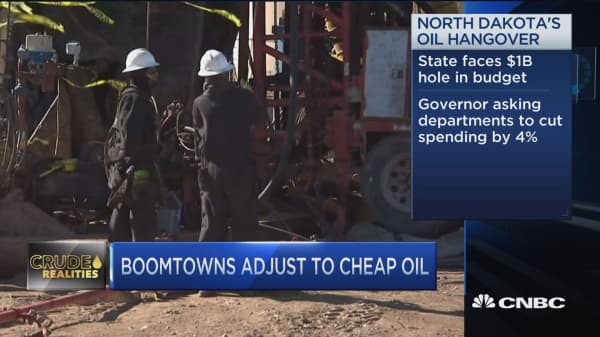The U.S. shale revolution restored America's outsize role in global crude production, but the story of the oil upheaval is playing out differently from state to state.
There is perhaps no place where the transformation is so stark as North Dakota. The state's oil production grew tenfold over the past decade as it built a thriving industry virtually from scratch, driving unemployment to a national low and filling government coffers with surging tax revenue.
But the collapse in crude prices has turned the tide. Oil and gas exploration activity has plummeted, out-of-state workers have decamped, and the budget has swung from surplus to deficit. North Dakota is faced with adversity from a position of strength after years of boom times, but the state's return to growth will depend in large part on when and to what degree oil production returns.
"Unemployment is still low in the state. There are still job opportunities. That's the positive thing going forward," said Allen Knudson, budget analyst and auditor for North Dakota's Legislative Council.
"The impact on sales tax from oil prices being down is really what's putting the pressure on the budget situation. Oil would make the biggest impact," he added, "WTI oil prices probably need to be from $50 to $60 a barrel before things would turn around."







